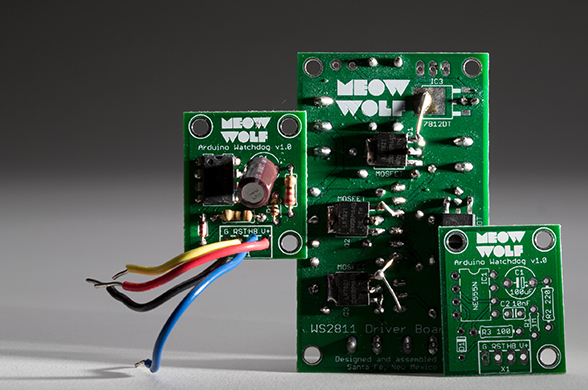Inspiration
Remembering NASA’s VIEW VR
Oct18
Shared By Felicia Constantine

While we were in Washington D.C. recently to support XQ America’s Super School Project award ceremony, we took advantage of a little downtime and visited the Steven F. Udvar-Hazy Center - the massive, dual-hangared companion facility to the National Air and Space Museum on the National Mall. The Udvar-Hazy Center is truly a sight to behold for any flight enthusiast or general nerd, but of all of the eye candy to feast upon - like a Lockheed SR-71 Blackbird, an Air France Concorde and the Enola Gay - our real target for this visit was the Space Shuttle Discovery.
It’s impossible to prepare yourself for the sheer enormity of this planet-orbiting “flying brick”. During our slack-jawed observation, we came across an easily overlooked exhibit that piqued our interest - a 1985 prototype VR headset for NASA’s VIEW (Virtual Environment Workstation) program.

These days, virtual reality is all the rage when it comes to bleeding edge technologies poised to fundamentally change the human experience. What many of us don’t realize, however, is that some of the core components of virtual reality, and certainly the promise of VR, has been around for decades. Spanning from the panorama paintings of the 18th and 19th centuries to Morton Heilig’s Sensorama in the 1950s, from Ivan Sutherland’s “Ultimate Display” in the 1960s to Jaron Lanier’s EyePhone in the 1980s (seriously… that’s what it was called), and from Nintendo’s Virtual Boy in the 1990s all the way to the HTC Vive today, VR technology has truly experienced a slow-burning development.
Recognizing VR’s epic history, and its continuing status as essentially an experimental technology, the 1985 VIEW headset was a wonder of its time. While only capable of displaying a simplistic visual environment, the VIEW was the first VR technology to incorporate a dataglove. With this glove, the user was able to grasp virtual objects, issue commands with gestures and fly through the environment by simply pointing. Anyone who has had the pleasure of experiencing Microsoft’s Hololens, one of the most advanced VR technologies today, will recognize this sort of user experience. The VIEW’s dataglove was even outfitted with tactile feedback which allowed the user to sense what he or she was touching. How immersive is that?
So given the level of virtual engagement VR was capable of in 1985, what’s so exciting about today’s developing virtual technologies compared to previous eras? To illustrate, consider the following comparison:
- In 1985, NASA’s VIEW headset was developed by three top-tier scientists, and funded with countless dollars from the United States Federal Government, for the purpose of controlling SPACE ROBOTS.
- In 2012 the Oculus Rift was developed by a student / video game enthusiast, and funded with $2.4M from 9,522 Internet users, for the purpose of changing the way people think about gaming.
In 1985 the virtual reality fraternity was composed of crackpot inventors and government researchers, neither of which were capable of or interested in utilizing VR to change the way the average human interacted with technology or other humans. In 2016, you can join your local VR meetup group, or just find one online, drop a couple hundred dollars on a cutting edge VR headset and use apps like Convrge to meet up in virtual space with real humans in real time (or enter a terrifying, zombie-infested landscape with just a pistol and flashlight for protection).
At Britelite we strive every day to find exciting ways to use the newest and most awe-inspiring technologies to create unforgettable experiences. Yes, controlling giant space robots from a comfortable chair in a hospitable atmosphere is uber-cool, but what could be cooler than utilizing virtual reality to expand the way we think and interact with each other on an elemental level? VR technology looks like it’s poised to do just that, even after trudging through the trenches of development for almost a century.
Written by TJ Mimbs - Britelite Project Manager
Britelite Immersive is a creative technology company that builds experiences for physical, virtual, and online realities. Read more about our capabilities or view our work.


